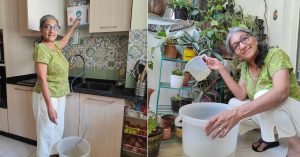Bengaluru Residents Can Do a Lot More to Save The City’s Water & It Isn’t Too Late to Start
What more can Bengaluru's residents do to save water? We explore some expert-recommended solutions you can take up at home.
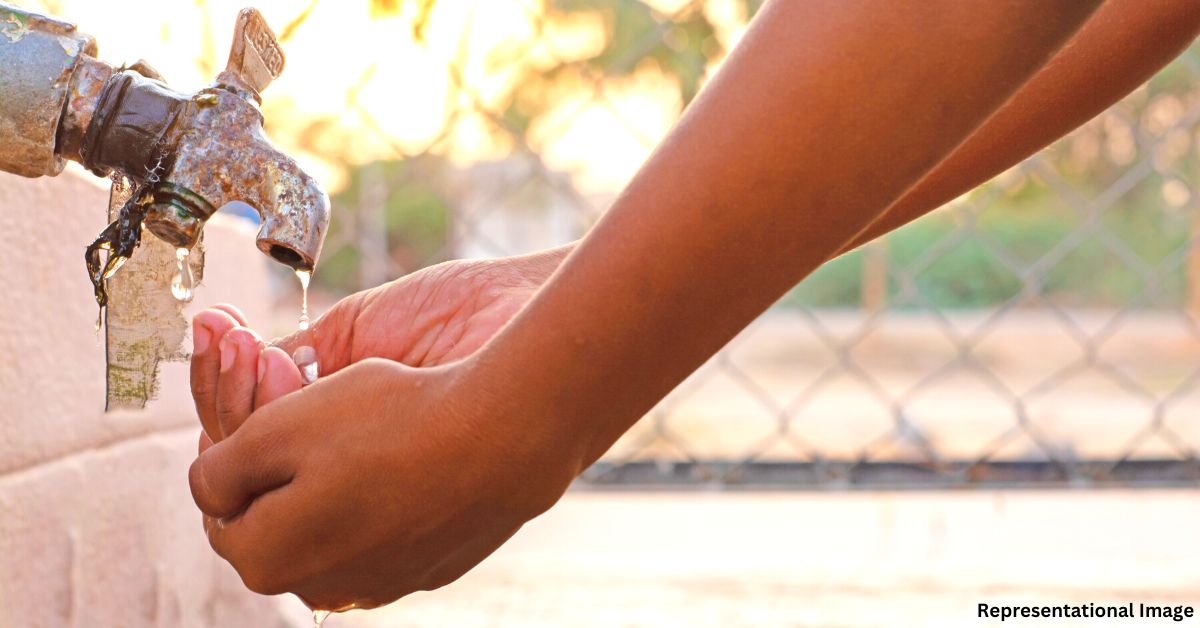
(In Part 1 of this series, we discussed a variety of problems and solutions on a policy level about Bengaluru’s current water crisis, addressing issues ranging from state failure to reviving lakes, recharging the city’s groundwater, building open recharge wells, and using treated wastewater as a genuine resource. Here we’ll discuss what residents can do to help!)
Despite issues of state capacity and the need to recalibrate water policy in Bengaluru, there is a lot residents can do to mitigate the water scarcity problem.
Speaking to The Better India, S Vishwanath, a civil engineer and urban planner with more than three decades of experience in the water and sanitation sector, says, “If I do rainwater harvesting, consume less water, recycle greywater, and make sure to minimise my demand, then there is some amount of water which I can save within my whole zone. And the administration can transfer some of my zone’s water to another which is facing scarcity.”
For those living in the affected area, especially in apartment complexes with 20 units or more (that are mandated to have their wastewater treatment plant), Vishwanath believes that if they make sure that their wastewater treatment plants are running well, then they can fulfil all their non-potable water requirements from those systems.
“If residents do rainwater harvesting well, their borewells will have water. If the community works around the lakes in their neighbourhood, comes together, and makes sure that the lake is cleaned up and de-silted along with the State, then these water bodies will be able to receive rainwater and recharge the aquifer. In the meantime, the excess water from their STPs that are well treated can be led into these lakes so that it recharges the aquifers. I believe these are all the steps that citizens have to take to protect the city’s water resources,” he recommends.
But what steps has he taken in his own home to reduce water consumption?
“Besides being mindful of the amount of water you consume, you can deploy technologies like aerators on your taps or shower heads. You make sure that the water you collect after cleaning your dishes is used to water your plants or the garden that you have,” he says.
“In my case, I make sure all the greywater is recycled. I make sure to collect the wastewater from my washing machine and half-bucket bath water. I use eco-friendly soaps and detergents which do not have phosphates and phthalates. This means that the wastewater from bathing or washing clothes can be used for swabbing the floor, watering the terrace garden, and cleaning the car. I have a dry compost toilet which requires no water for the last 25 years. Of course, this may seem a bit extreme to some but it has worked for me,” he adds.
Vishwanath’s home also has rainwater harvesting systems that are operating optimally.
“Even though the last rains in the city were in November, our 1,000-litre rain barrel still has enough water for our drinking and cooking needs till June. I have taken away plants which would have otherwise grown and left the garden to be dry so that when the rains come, I can restart my garden. Right now, I only have drought-tolerant plants,” he shares.
“Also, I make sure to use less energy (electricity). The less energy I use, the more water you’re saving in some dam or thermal power plant. You have to be mindful of the energy you use and about the food you eat so you don’t waste it. These are some of the steps I have taken,” he explains.
‘How can I reduce my water consumption by 50%?’
One of the points mentioned by Vishwanath in reducing his water consumption was the use of aerators. It’s one of the simplest hacks you can adopt in your home to reduce water consumption.
So, The Better India spoke to Shashidhara Kumaraswamy, the co-founder of EverythingECO, a Bengaluru-based startup addressing the challenges of water and waste management. Among the products EverythingECO manufactures are aerators that you can attach to washroom or kitchen taps and restrictors for shower heads and health faucets.
“Karunaprasada Kanavi and I started EverythingECO with a vision in 2016 to bring sustainability to businesses and homes, addressing the challenges of water and waste management. Before getting into business, we looked at how people and different businesses were using water, what their daily consumption levels were, and started thinking of customised solutions required for each of them,” says Shashidhara.
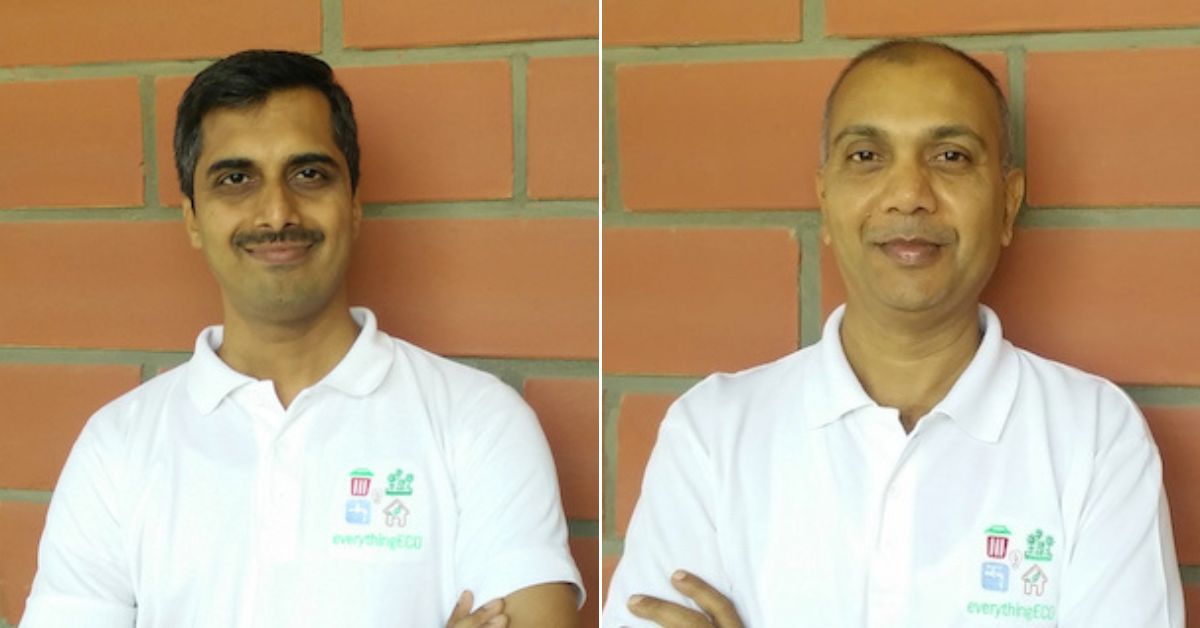
When Shashidhara and his co-founder did a detailed audit on water consumption levels across multiple locations in Bengaluru, they found that each business or residential unit has specific requirements based on its usage pattern. In certain locations, they found the flow rate measured in hand washing taps to be around 15 to 16 litres per minute.
“Typically, we have observed that when you buy taps of standard fittings, their flow rate is between 14 to 18 litres per minute based on water pressure. Most fixtures sold commercially do not have any aerators. They come with filters to filter out the dust. These filters don’t do the job of water conservation, but only ensure the laminar flow of water,” he informs.
During this audit, they concluded that taps for hand washing should never have a flow rate of more than 3 litres per minute. Similarly, for kitchens, they understood that people required a higher flow rate but not more than 6 to 8 litres per minute. “In an ideal scenario, no tap should have a flow rate of more than 6 litres a minute,” explains Shashidhara.
“When we look at multiple use cases in terms of hospitals, restaurants, and bulk washing areas, their requirements are very different and not everyone can live with spray taps releasing 3 litres a minute. We started looking at custom designs and solutions. Our company does comprehensive water audits for businesses and provides solutions for varied sizes of taps, addressing diverse types of flow rates that are required, and implementing them end-to-end,” he adds.
Aerators manufactured by EverythingECO start with flow rates (per minute) of 1 litre, 3 litres, 4 litres, and 6 litres. “Aerators with a flow rate of 0.5 and 1 litre per minute usually offer a mist-type flow. But for commercial and residential apartments, this flow rate is too low to wash hands. For hand wash taps, our aerator which restricts flow rates to 3 litres a minute is popular across all sectors. Many people opt for 3 litres a minute aerator for their kitchen taps as well, because it effectively covers a larger area for washing utensils. If customers want laminar flow in their kitchen taps, then they go for 4 or 6 litres a minute aerators,” claims Shashidhara.
“Restrictors reduce the amount of water that is coming out from the pipes or the entry points. You can attach these restrictors to older type taps, health faucets and shower heads and reduce the flow rate to anywhere between 6 to 9 litres a minute. Depending on the water pressure of their shower heads, people can use restrictors to limit the flow rate to 6 to 9 litres,” he adds.
Shashidhara notes that there are a couple of questions residents should answer if they are serious about reducing personal water consumption.
1) What is my daily consumption and where do I use my water?
In other words, how much water do I use for washing my hands, bathing, shaving, brushing, washing clothes and utensils, etc?
2) Understanding why I use X amount of water in a day.
For example, if I’m using 400 litres of water a day, do I need this much to live well? “Fundamental living requires 3 litres of drinking, 5 litres of cooking (per day) and the rest we are washing and flushing down the drain,” he says.
3) How do I reduce my daily water consumption by 50%?
“And then you implement solutions available including aerators, restrictors, and using low-flush toilets. Taking a shorter shower helps save water compared to a 20-minute shower. Attaching a restrictor with a flow rate of 6 litres to 7 litres per minute to an existing shower head will help reduce water wastage by 50%,” he explains.
Having said that, Shashidhara believes real water savings come from a collective effort rather than somebody changing a single tap.
“You also have to adopt a mechanism to reduce your utilisation. For example, if you install an aerator on your kitchen tap, but you are washing utensils for a longer period, then you’re not reducing water consumption. You may end up consuming more water than before. You need to be cognizant of how you’re going to use water and restrict the amount coming out from the taps and shower heads,” he adds.
“In the city, we have 1 crore 40 lakh population, 150 litres of water consumption per person per day is required,” said Bangalore Water Supply & Sewerage Board (BWSSB) chairperson Dr V Ram Prasath Manohar, according to a news report on 13 March 2024.
Surely, we don’t have to use this much water on a given day and can find ways to save some.

Standardisation of taps
“One challenge we have observed recently is that a lot of tap designs are changing. This is an important aspect I want to highlight,” explains Shashidhara.
“There is a dire need for standardisation across the industry, builders, and Government on standardising fixtures backed by a rating system for water conservation or efficiency. Unless standardisation sets in, new tap designs will emerge and none of the aerators will be compatible. When that happens, flow rates return to 16 litres/minute,” he adds.
According to The Hindu in April 2023, the Union Government was bringing in a star rating system for water fixtures similar to the ratings of electrical appliances. “The new rating system would have 3, 4 and 5-star water fixtures based on their water efficiency and this rating system would come under one umbrella called Bharat Tap,” the report said.
“We have now roped in the Indian Plumbing Association and all manufacturers to adopt and promote these standards and bring in water-efficient fixtures. Bharat Tap is a collaborative effort which was formulated under AMRUT 2.0 to drive water efficiency, and this can be achieved only if water outlets are efficient, be it sanitary fixtures or taps,” said D Thara, Additional Secretary, MoHUA (Ministry of Housing and Urban Affairs) and Mission Director, AMRUT 2.0.
Since this report, however, there have been no news reports of this initiative’s progress.
Saving toilet-flushing water
Besides attaching aerators and restrictors in your home, another step you can take is to reduce the amount of water you use to flush toilets. According to one estimate, the city is flushing out an incredible 486.5 million litres of water daily. People can install a low-flush toilet, use non-potable treated water instead of freshwater, or adopt hacks like the one developed by Subburaman M — a septuagenarian and resident of Trichy, Tamil Nadu, who won a Padma Shri for improving sanitation in rural areas.
Subburaman is the founder of the Society for Community Organisation and People’s Education (SCOPE) — a non-profit which has installed 1.2 lakh toilets across India. In 2020, he developed a simple solution in his home that allows greywater generated from washing hands to be used for flushing the toilet instead of fresh water.
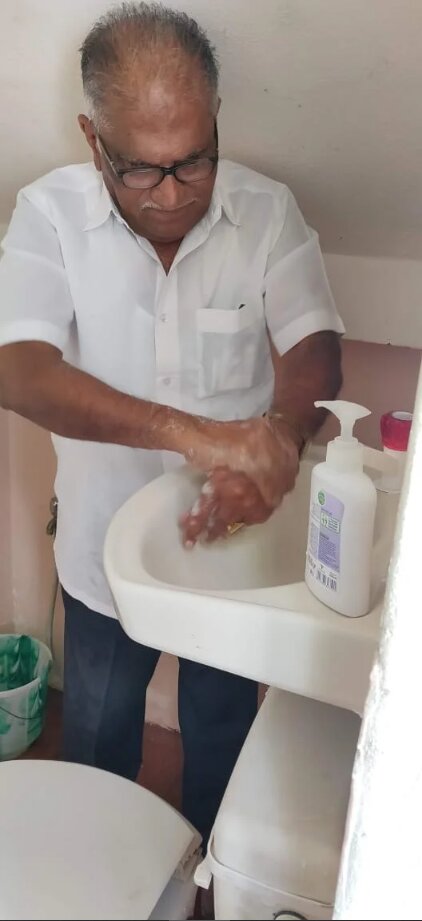
Speaking to The Better India in April 2021, he said, “During the lockdown period, everyone started washing their hands often to stay safe from coronavirus. However, many did not think about saving water while doing so. Some people even keep the water running while lathering soap for 20 seconds. This leads to massive wastage. So I started to think of ways we could reuse this water,” says Subburaman, adding that he was inspired by a picture of a Japanese toilet that had a washbasin integrated with a toilet.
What Subburaman did was purchase a new wash basin and fit it right on top of a Western-style toilet. However, he says that an old one can be removed and refitted too.
“The idea was to connect the basin to the toilet’s flush tank. To do so, the exit pipe from the basin was inserted on top of the flush tank through a hole. The cutting work was done with the help of a plumber,” said Subburaman. Once the two were fitted, they were sealed in place, and the water connection was directed only to the washbasin.
For the past six months before speaking to The Better India, he said it was working perfectly and faced no damages or leakages.
He even offered a five-step manual on how you can do the same at your home:
Step 1: With help from a plumber, install an old/new washbasin on the wall over the toilet’s flush tank.
Step 2: Create a hole, as big as the outlet pipe, on the flush tank.
Step 3: Once the washbasin is mounted, insert the outlet pipe into the flush tank.
Step 4: Direct the water supply to the washbasin and turn off the valve leading to the toilet.
Step 5: Open the tap and let the water run for a few seconds to check for any leakages.
It takes up to three or four hand washes to fill up the flush tank. To avoid touching the tap while washing hands, he also had a foot pedal installed which he says is optional.
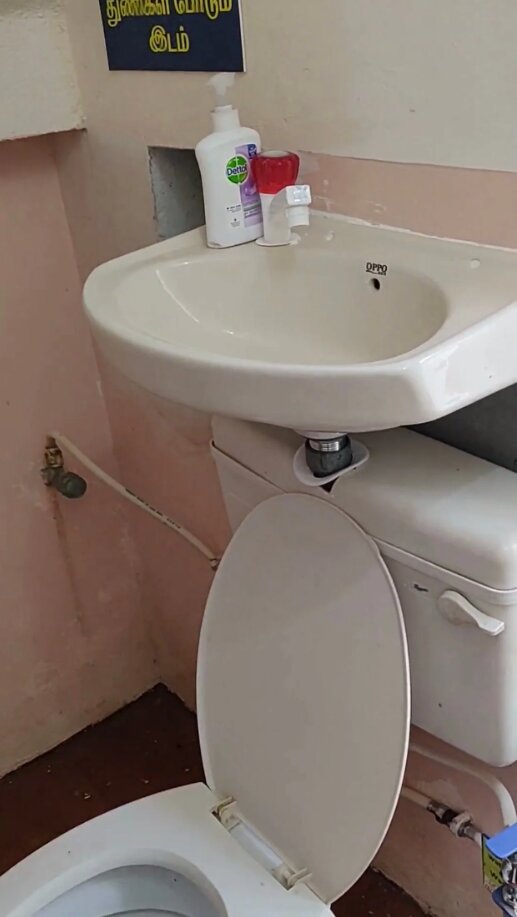
Encouraging Bengaluru’s residents
There is one thing the local administration — whether it’s the BBMP or the State Government — can do to encourage its residents to save water instead of building another app. They can take inspiration from one of the many steps that the city of Cape Town in South Africa took.
What did they do?
They published a detailed water map of the city combining water usage data with houses colour-coded based on how much water each one was consuming. Only those houses which hit water-consumption/saving targets set by the administration were acknowledged. City administrators knew which houses weren’t meeting their targets, but they created a map not to shame anyone but to recognise those that did meet their targets.
As the Urban Sustainability Exchange noted in a popular case study, “the Water Map experienced some of the highest internet traffic ever experienced by a City of Cape Town webpage.”
The study went on to add, “It was widely reported on in the local media and received much attention on social media. The Water Map thus achieved substantial water conservation awareness and is believed to have contributed to the dramatic reductions in domestic water use, which prevented the City from running out of water, the so-called ‘Day Zero’.” If you found our stories insightful, informative, or even just enjoyable, we invite you to consider making a voluntary payment to support the work we do at The Better India. Your contribution helps us continue producing quality content that educates, inspires, and drives positive change. Choose one of the payment options below for your contribution- By paying for the stories you value, you directly contribute to sustaining our efforts focused on making a difference in the world. Together, let’s ensure that impactful stories continue to be told and shared, enriching lives and communities alike. Thank you for your support. Here are some frequently asked questions you might find helpful to know why you are contributing?

(Edited by Pranita Bhat; Images courtesy Shutterstock/WESTOCK Productions/MudaCom)
This story made me
- 97
- 121
- 89
- 167








